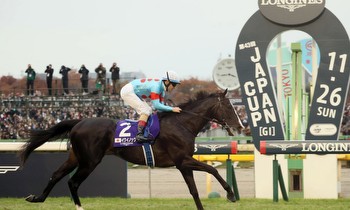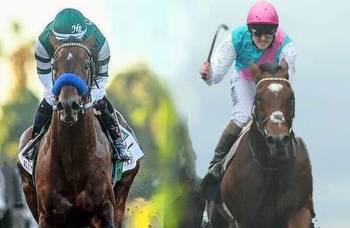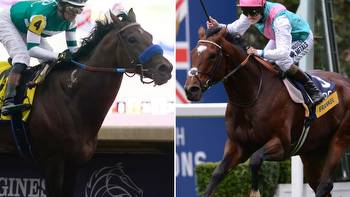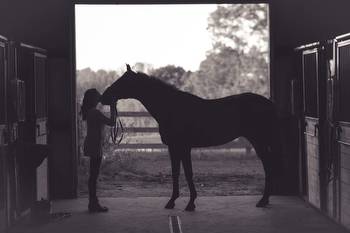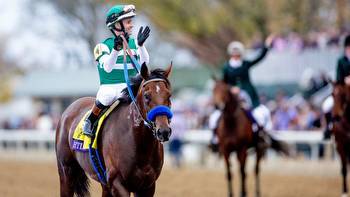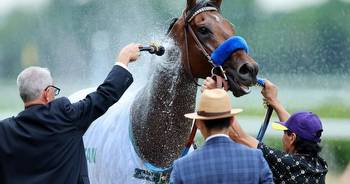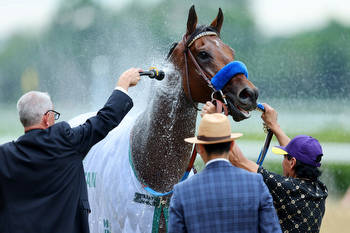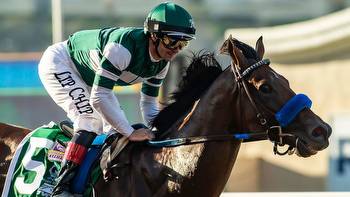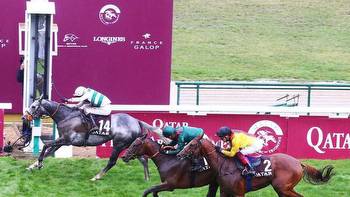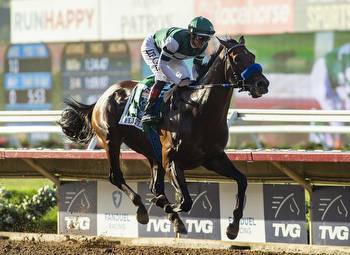Flatter: Comparing Flightline with Frankel is fraught with peril
We had to listen closely from this side of the pond. Thatfaint noise in the distance this week was a full-blown rumble over there in London, whereFlightline was honoured – yes, with a “u,” – as the world’s best racehorse of2022.
Not just of 2022, really. Flightline was awarded 140 mythicalpounds in the handicapping system used by the International Federation ofHorseracing Authorities to determine the best Thoroughbred on this here planet.That figure was five pounds better than No. 2 Baaeed.
It was not so much that Flightline was decreed the best in theworld last year. There was no legitimate argument against that ranking. OnceBaaeed lost in the British Champion Stakes (G1), all our horse over here had todo was show up and run away from everyone in the Breeders’ Cup Classic. As wesay sometimes too soon but in this case right on cue, mission accomplished.
The problem came when it was noticed that Flightline’s 140was the highest for any racehorse since Frankel a decade ago. For theuninitiated, Frankel started 14 races, won 14 races, 10 of them Group 1s, andwas the undisputed world champion in 2011 and 2012. Racing exclusively in England,he might have been the best turf miler ever.
When a panel of international racing wonks handed out that goldenticket, that second 140, it barely raised an eyebrow over here. However, inEurope it was quite the opposite, especially for hackles in the Isles.
“Frankel’s equal? Why the handicappers have got it wrongover Flightline,” screamed one headline in Racing Post, the Britishbible for the sport of kings.
“The fact that Flightline is officially the equal of Frankelhighlights the fatal flaw in the official ratings,” snorted John Randall, oncea £500,000 winner over there on “Who Wants to Be a Millionaire” and aself-described racing historian. “Official ratings ... are worthless when itcomes to historical comparisons.”
“I don’t know how official any of these rankings reallyare,” sighed Jerry Seinfeld to Izzy Mandelbaum in 1997. That actually was abouta comparison of dads, but the line works perfectly well here.
I felt obligated to clean up all the gauntlets that wereflung all over the floor. Should I not defend the land of the free, the home ofthe brave and our horse of a generation?
Well, yes. Of course. But not on the strength of analytics. Because that iswhat these numbers are. Analytics. That is a word with the most appropriatefirst four letters in the English language.
In short, the IFHA ratings are a crock. They accidentallygot it right this year, but do not forget what they really are. They do notrank the best racehorses but, instead, a horse’s best race.
Flightline did not get his score of 140 for his 3-for-3 yearor his 6-for-6 body of work. Instead, a panel of international handicappers gavehim that weight for his geared-down, 19 1/4-length win last summer in thePacific Classic (G1).
Put this system in American terms. If we went simply by theBeyer Speed Figures published by Daily Racing Form, then Flightline was ourhorse of the year based solely on his 126 at Del Mar.
Using that same prism, Flightline also would have been horseof the year in 2021 on the basis of his 118 in the Malibu (G1). At least hewould have been if the IFHA best-race template been used.
That system has been known to backfire in some embarrassingways. There was no better, or worse, example of this than in 2016. That waswhen a horse named A Shin Hikari came out of Japan and showed up in Chantilly,France. On a miserably wet day that turned the grass into a marsh, he made likea hydrofoil and won the Prix d’Ispahan (G1) at odds of 7-1.
There is an international panel of handicappers who are theequivalent of our morning-line writers. This group gathers every so often on aZoom call to pronounce world rankings throughout the year. This was the groupthat gave A Shin Hikari a 123 that, at the time, made him No. 1 in the world.For three months. He astoundingly stayed there until California Chrome uncorkedhis own big number in the Pacific Classic.
After displaying his superior aquatic skills in France, AShin Hikari got back on land and finished last in the Prince of Wales’s (G1) atRoyal Ascot, 12th back home in the autumn Tenno Sho (G1) and finally 10th inthe Hong Kong Cup (G1). That was it. The horse who broke serve in the rain atChantilly lost 6-1, 6-0, 6-0. Game, set, career. Even so, at the end of theyear, when Arrogate rose to No. 1 in the world, A Shin Hikari still ranked No.5.
Making these honors even more dubious was the retrospectiverecalibration almost exactly 10 years ago of some old ratings. But not all ofthem. Champions from the ’70s and ’80s had their numbers reduced beneathFrankel, whose 140 was not altered. As one critic wrote 10 years ago in TheGuardian, “it might be a coincidence that the handicappers chose to ‘graspthe nettle’ and revise all the ratings between 1977 and 1991 in the same yearthat Frankel retired unbeaten. ... Will anyone believe it?”
This tinkering with the numerical framework smacks ofrevisionist history. They did this with the decathlon in 1934 and 1950 and 1962and 1984 and 1998. Football concocted and re-concocted its passer ratings,somehow making 158.3 the mark of perfection in the NFL and 1261.6 the same incollege. Even gymnastics got rid of the perfect 10.
In short, the ratings are flawed. All ratings are flawed. Thankfully,we did not take some sleight of mathematical hand to realize that Flightlinewas the best of 2022.
The problem comes when we try to make a horse into somethingit is not. I do not remember John Sadler ever saying he was trying to trainFlightline into a better horse than Frankel. The closest he might have gottento that could have a story about Bobby Frankel, not the bay Frankel.
The morning after the Pacific Classic, I called WilliamHaggas, the trainer of Baaeed. At the time both Baaeed and Flightline hadunblemished career records. The first thing Haggas said after I identifiedmyself was, “What am I supposed to say?” He already was gushing about what hesaw on TV in the middle of a European night.
That same day Sadler said, “I’d be curious to see what therankings are.” Well, who wouldn’t be? He just as quickly said, “That’s a hardcomparison.”
That was just between two horses running on two differenttypes of surfaces on two different continents – but in the same year. Try anddraw that comparison between champions separated by surfaces and an ocean and adecade. That is difficult enough in conversation. To look at a pair of 140s thrownon the table and then declare the two of them were in lockstep was just silly.
John Gosden, who trained for years at Santa Anita before re-establishinghimself as an icon in his native England, told Racing Post, “Flightlinehad an incredibly fluent stride, and if you watch him, it never falters. … That’swhat he shares with Frankel. That incredible stride and the ability to make itlook easy.”
That was more like it. Nothing more numerically to see here,folks. Appreciate them both, and stop trying so hard to say Spiderman wasbetter than Batman.
The bottom line is this. Flightline was the horse of ageneration. He set out to dominate America, and in so doing he happened to conquerthe world. It was just like when Frankel set out to dominate England, and hehappened to conquer the world.
Don’t tell me, though, that Flightline was as good asFrankel.
At the same time, don’t dare tell me that he was not.

